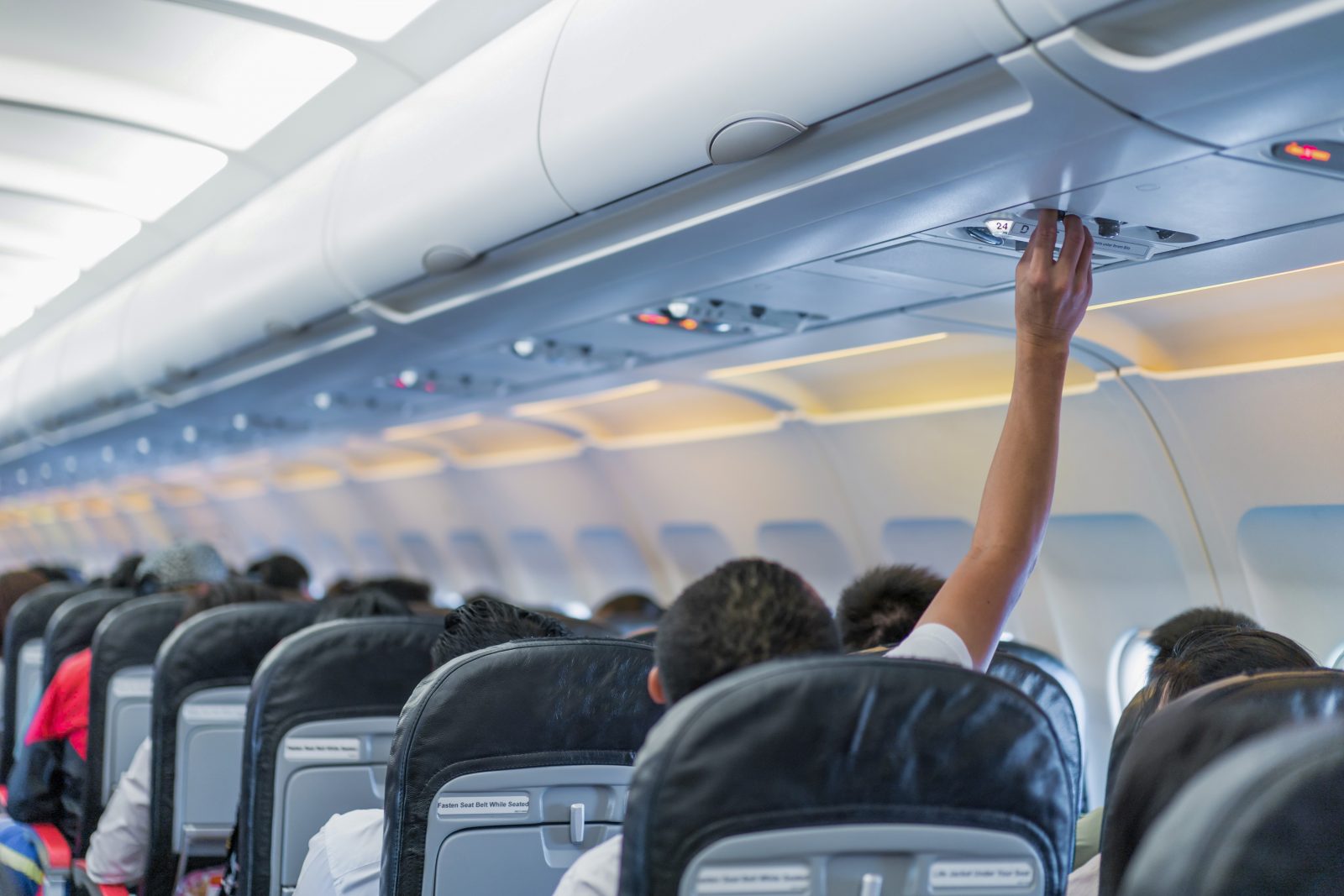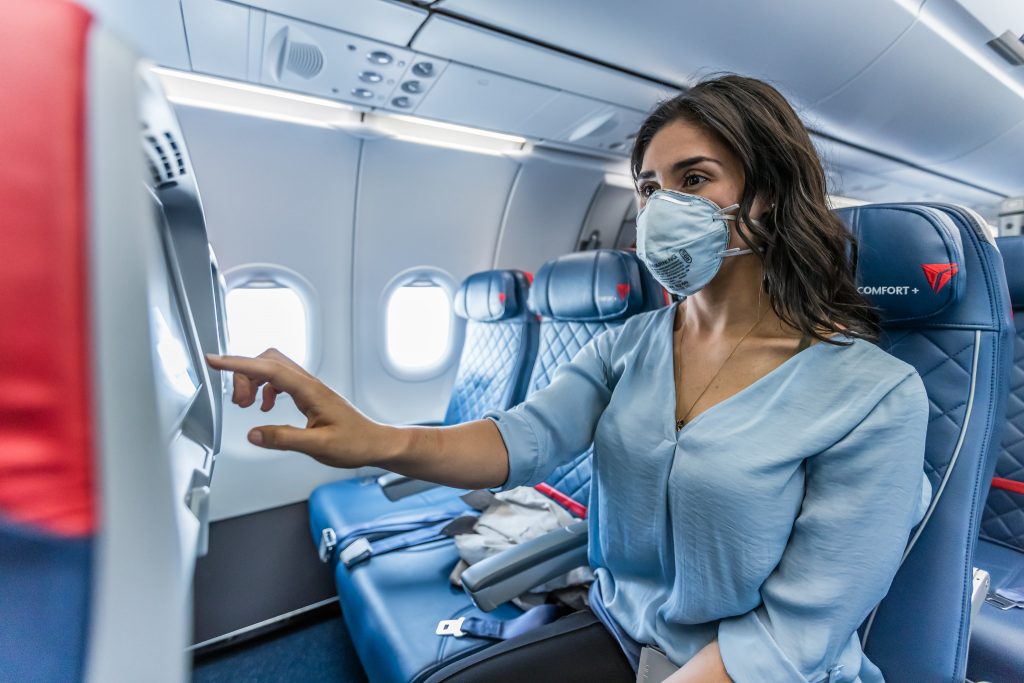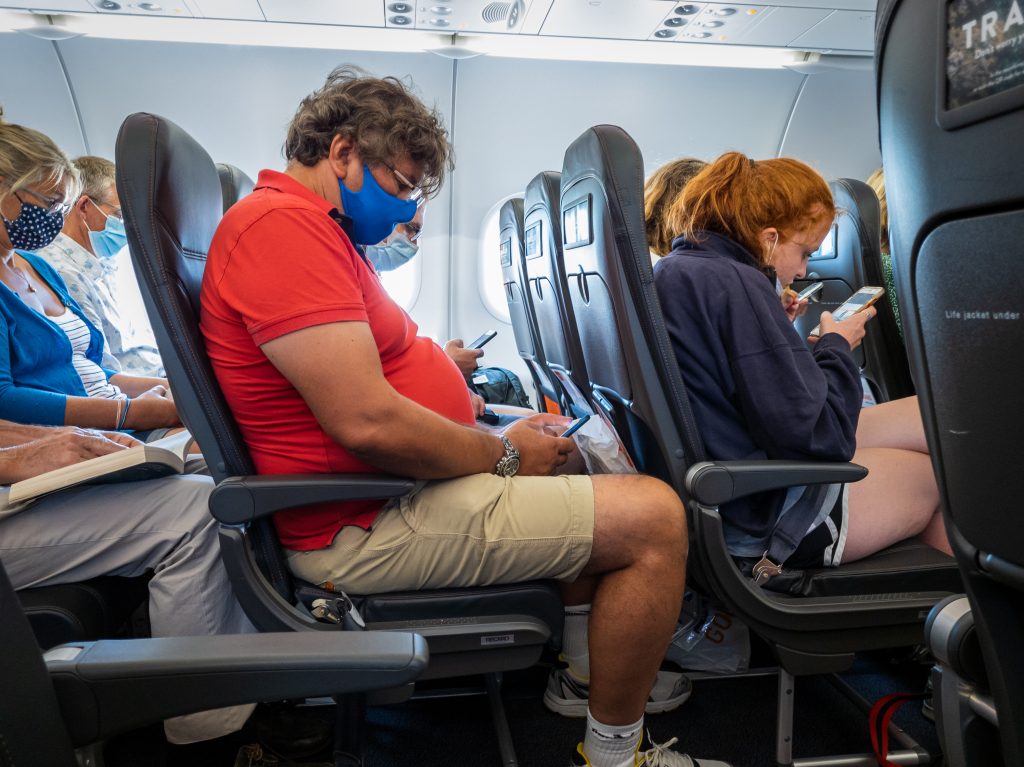
There’s no doubt that international air travel helped to quickly spread the virus that we would later refer to as COVID-19 in early 2020 to all four corners of the world. But what is the actual risk of catching COVID-19 on a plane from an infected seatmate and could using the individual air nozzles reduce that risk?
There are various studies that have shown that mid-flight infections have most likely occurred but the incidence rate remains remarkably low, especially given the fact that most airlines still require near-universal mask-wearing and vaccine requirements are becoming increasingly common.

The airline industry insists the risk of contracting COVID-19 on a flight is “very low” due in part to the way that air is supplied to the cabin. The International Air transport Association (IATA) claims airplane cabin air is actually better than most other indoor environments as the air is renewed every 2 to 3 minutes – around 10 times more than the average office.
Airflow in modern passenger planes is from top-to-bottoms, meaning that air is fed into the cabin from the ceiling and then sucked out via vents at floor level. Half of the sucked out air is passed through hospital-grade HEPA filters that remove 99.993 per cent of bacteria and viruses, while the other half is replaced with fresh air from outside.
The top-to-bottom airflow design is meant to prevent viruses from being able to circulate around the cabin, which should make individual air vents redundant in the fight against COVID-19. Indeed, the air industry doesn’t make any mention of individual air vents as a virus protection measure but some experts think they could help protect passengers.
In the early months of the pandemic, Dr. Mark Gendreau, chief medical officer at Beverly Hospital in Massachusetts advocated the use of individual air nozzles (or gaspers as they are known in the industry) to create extra air turbulence in your space.
By angling the gasper so that air lands slightly in front of your face, Gendreau said modelling studies had found the use of the gasper “does create some extra turbulence in your personal air space and that might create enough turbulence where the particle doesn’t sort of land on your mask or on your arm.”
But while Americans were receiving advice to consider opening individual air vents to fight off COVID-19 particles, European air travellers were being ordered to close individual air vents.

In fact, in its latest pandemic travel advice, the European Air Safety Agency (EASA) continues to tell passengers to close air nozzles and instead rely on the central air conditioning system to do the leg work in protecting passengers from COVID-19.
Key research from the U.S. Department of Defense that looked at the risk of aerosol particle transmission on Boeing 777 and 767 airplanes was almost non-existent when all passengers were wearing a face mask.
Across 300 tests carried out on two United Airlines planes, researchers tested various scenarios including whether you could reduce the risk of aerosol transmission by using individual air vents.
The study concluded that turning the overhead gasper on or off “does not make a significant impact on aerosol risk and could continue to be used primarily for traveler comfort.”
Aircraft manufacturer Boeing also carried out research using computer modelling to see whether turning on the air gaspers could reduce the risk of in-flight transmission. Again, the study concluded that turning on the air vents made little impact on the risk.
The World Health Organization (WHO) has also provided advice for safe air travel which includes wearing a face mask, frequent hand washing and maintaining physical distance wherever possible. The WHO does not advocate the use of individual air vents.
So, does using the individual air vents (gaspers) on an airplane reduce your chances of catching COVID-19? The existing research suggests that turning the gasper on does not have any significant impact on aerosol transmission risk and that air vents can continue to be used purely for individual comfort.
This advice is reliant on current measures like universal face mask-wearing remaining in force. Its also important to note that for airplane air conditioning to work properly, the engines or APU must be running. During boarding and deplaning, the APU may not be switched on.
Mateusz Maszczynski honed his skills as an international flight attendant at the most prominent airline in the Middle East and has been flying ever since... most recently for a well known European airline. Matt is passionate about the aviation industry and has become an expert in passenger experience and human-centric stories. Always keeping an ear close to the ground, Matt's industry insights, analysis and news coverage is frequently relied upon by some of the biggest names in journalism.







